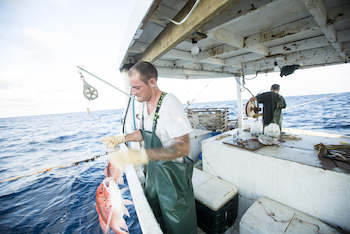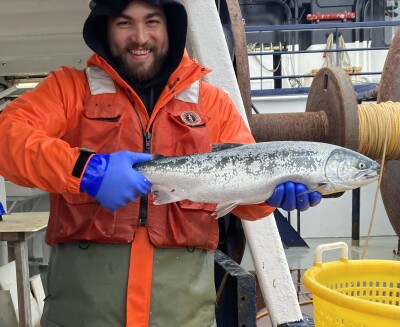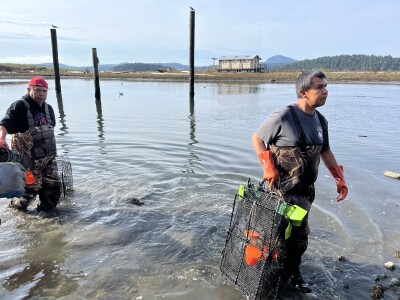An editorial this week in the Tallahassee (Fla.) Democrat by state legislators Sen. Thad Altman and Rep. Frank Artiles continues to wave the flag for state management of the Gulf Coast red snapper fishery.
In the editorial, the writers laud the successful state management of spotted sea trout, flounder, sheepshead, tarpon and redfish.
Gulf Coast commercial fishermen like Anthony Marbella on the Avenger out of Galveston, Texas, are still fighting the CCA over fishing rights. Gulf of Mexico Reef Fish Shareholders' Alliance photo“The fishery examples that Senator Altman and Representative Artiles use are misleading and have nothing to do with healthy, well-managed federal commercial fisheries,” says commercial fisherman Bill Tucker of the F/V Wing Shot in Dunedin, Fla.
“They don't give us any examples of highly political, well-managed federal commercial fisheries managed by the Gulf states because they've all been drastically reduced or completely eliminated. So tell me why does a state senator from a district on the Atlantic Ocean and a state representative from a landlocked district really think they know better than commercial red snapper fishermen in the Gulf of Mexico?”
Among commercial fishermen, the top concern about splitting the gulfwide red snapper fishery between the Gulf Coast states is not about putting the fishery in more or less capable hands, it’s about retaining the commercial fleet’s long-term access.
The Coastal Conservation Association and its allies have made their agenda crystal clear — take quota from the commercial fishermen (and wild, healthy fish from the American consumer) and give it to the recreational sector.
Let’s look at a brief history of the fishery.
The biomass was depleted, and no sector was getting much. The commercial fleet underwent severe attrition as a result of IFQs. Many boat owners were shut out of the fishery, and many other crew members lost their jobs.
However, under this new management system — combined with restrictions on recreational interests based on the prior year’s landings — the fishery has been rebuilt to abundance. The commercial fleet has been granted 51 percent of the quota with 49 going to sport fishing. The tide keeps rising, and there’s more fish all the time.
Last year, the CCA made a significant push to give 75 percent of the quota over a certain threshold to recreational fishermen.
That means commercial fishermen would have their red snapper dividend checks cut in half after making the necessary sacrifices to rebuild their fishery.
The message being: If you do the hard work, someone will come along to lay a heavy tax on your earnings. But don’t worry, they’ll have a lovely vacation in Florida.
Only now the message is even worse: If you do the hard work, enough recreational fishermen will be interested enough to take it all away from you under the auspices of state management.
We already hear a lot about species substitution when it comes to red snapper, but that won’t be a topic of discussion if the fish is reserved for sport fishing. How long will it be before any or all of the Gulf Coast states opt to designate red snapper a gamefish?
I’d rather not find out.







